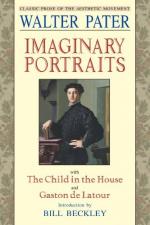|
This section contains 12,036 words (approx. 41 pages at 300 words per page) |

|
SOURCE: “Opening Conclusions” in Transfigured World: Walter Pater's Aesthetic Historicism, Cornell University Press, 1989, pp. 11-37.
In the following excerpt, Williams examines the infamous “Conclusion” to Studies in the History of the Renaissance and explains what Pater meant in proposing aesthetic distance as an alternative to prevailing modern thought.
My choice to begin with the “Conclusion” is not an empty gesture, though it is a familiar and almost traditional opening gesture in discussions of Pater's work. My reason has little to do with the fact that the “Conclusion” to the 1873 first edition of Studies in the History of the Renaissance was, and is, Pater's most controversial piece, that it inaugurated the career of public notoriety which he both invited and evaded, and that it established him as the inspiration of an elite counterculture whose further elaborations often shocked him, precipitating his lifelong recoil into less and less vivid restatements...
|
This section contains 12,036 words (approx. 41 pages at 300 words per page) |

|


